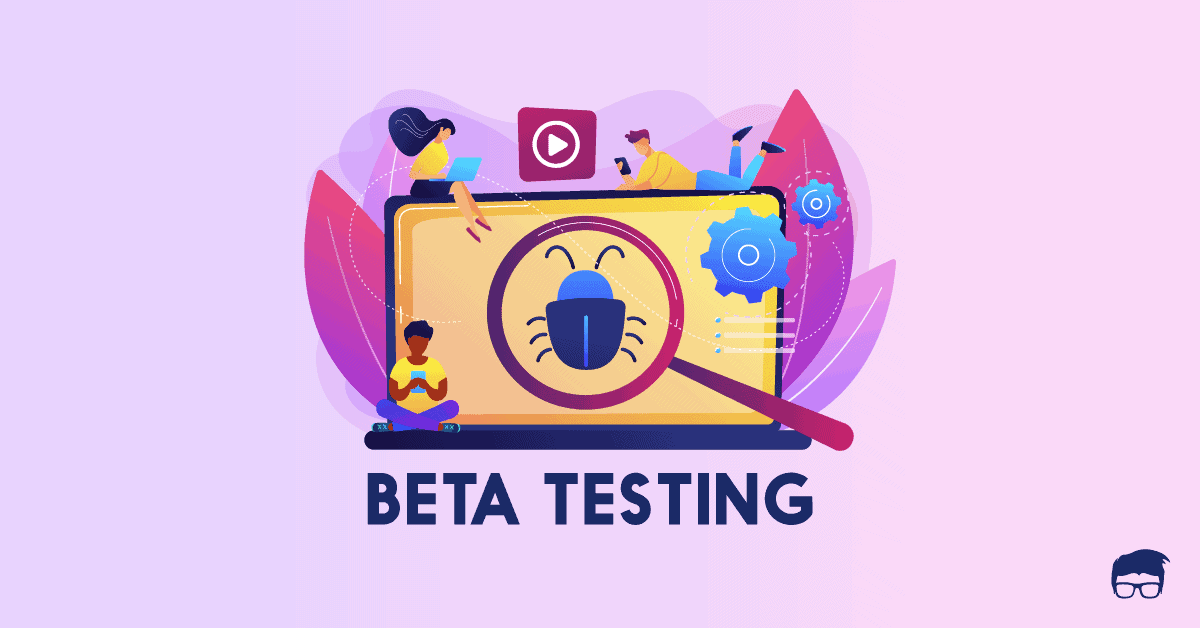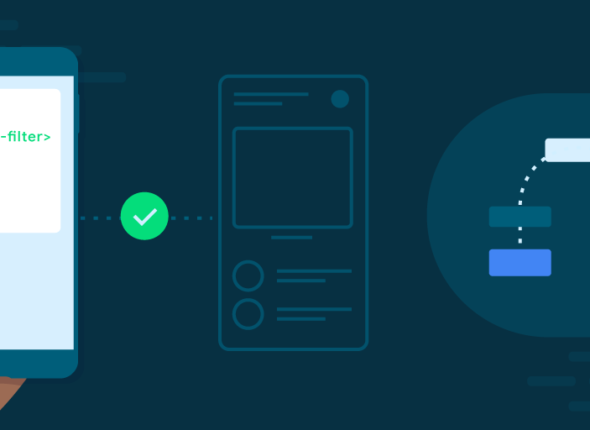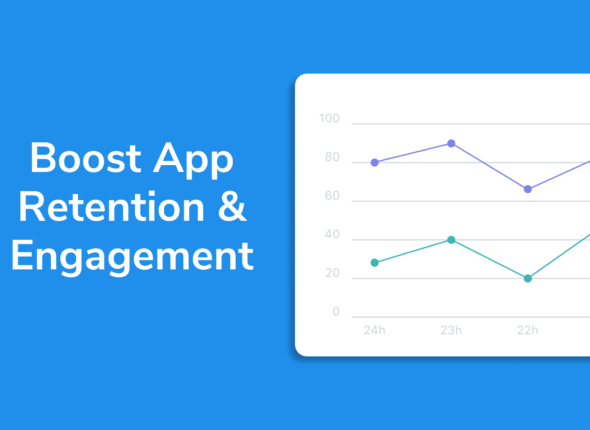In today’s competitive software market, the importance of delivering high-quality, user-friendly applications cannot be overstated. Beta testing plays a crucial role in the software development lifecycle, ensuring that the final product meets users’ expectations and functions seamlessly.
As app development experts, we recognize the significance of beta testing in delivering top-notch mobile apps. Today, we’ll discuss the concept of beta testing, its importance in mobile app development, and best practices to help you get the most out of your beta testing process.
What is Beta Testing?
Beta testing is a phase in the software development process where a nearly complete version of a product, typically a software application or app, is released to a limited audience outside of the internal testing team. This group of users, known as beta testers, uses the product in a real-world environment to identify any remaining issues, bugs, or usability concerns before the final release.
Key Aspects of Beta Testing:
Real-World Testing: Beta testing is conducted in a live environment by real users, which helps identify issues that may not have been detected during internal testing or in controlled environments.
Feedback Collection: Beta testers provide feedback on their experience, reporting bugs, and offering suggestions for improvements. This feedback is crucial for refining the product before its official launch.
Usability Testing: Besides identifying bugs, beta testing helps assess the user experience (UX). It reveals how intuitive and user-friendly the product is, allowing developers to make necessary adjustments.
Performance Evaluation: Beta testing can also be used to test the product’s performance under real-world conditions, such as how it handles different network conditions or hardware configurations.
Limited Audience: Typically, beta testing is done by a select group of users who may be invited based on their demographics, technical expertise, or other criteria. This ensures that the product is tested by a diverse range of users.
Duration: The beta testing phase can last from a few weeks to several months, depending on the complexity of the product and the amount of feedback collected

Importance of Beta Testing
Beta testing is a crucial phase in the software development process, offering several significant benefits that contribute to the success of a product. Here’s why beta testing is important:
1. Real-World Validation
- Exposure to Actual Use Cases: Beta testing allows the product to be used in real-world conditions by actual users. This helps uncover issues that may not have been detected during internal testing, such as how the product performs across different devices, network conditions, or user environments.
- User Behavior Insights: By observing how real users interact with the product, developers can gain valuable insights into user behavior, preferences, and pain points, which helps in making the product more user-friendly.
2. Identifying and Fixing Bugs
- Uncovering Hidden Issues: Even the most rigorous internal testing cannot replicate the diverse ways users might interact with a product. Beta testing helps identify bugs, glitches, and other issues that might have been overlooked, ensuring a smoother final release.
- Improving Stability: Feedback from beta testers helps developers improve the stability and performance of the product, reducing the likelihood of crashes or errors after the official launch.
3. Enhancing User Experience
- Usability Testing: Beta testing provides insights into how intuitive and easy to use the product is. Feedback on user experience (UX) can lead to enhancements that make the product more enjoyable and accessible for the target audience.
- Refining Features: Based on tester feedback, developers can refine features, add missing functionalities, or remove unnecessary elements, making the product more aligned with user needs.
4. Reducing Risk
- Mitigating Post-Launch Issues: Identifying and addressing potential problems during the beta phase reduces the risk of major issues emerging after launch, which could lead to negative reviews, poor user retention, and costly post-launch fixes.
- Market Readiness: Beta testing helps ensure that the product is ready for the market, reducing the risk of failure due to overlooked issues or unmet user expectations.
5. Building Customer Trust and Engagement
- Early Access: Allowing users to participate in beta testing can build excitement and loyalty among early adopters, who often feel valued for being part of the development process.
- User Feedback Loop: Engaging with beta testers creates a feedback loop where users feel heard, which can lead to higher satisfaction and stronger customer relationships.
6. Marketing and Promotion
- Word-of-Mouth Marketing: Beta testers who have a positive experience are likely to spread the word about the product, helping generate buzz before the official launch.
- Testimonials and Reviews: Positive feedback from beta testers can be used in marketing materials to build credibility and attract more users.
7. Cost Efficiency
- Preventing Costly Fixes: Identifying and fixing issues during the beta phase is generally less expensive and less disruptive than addressing them after the product has been launched.
- Focused Development: Beta testing allows developers to prioritize features and fixes that matter most to users, avoiding unnecessary work and focusing resources on areas that will have the greatest impact.
Creating apps is no less than creating art.
Learn non code app development with Appbanao.
Types of Beta Testing:
- Open Beta: Available to anyone interested in testing the product. This approach can gather a large amount of feedback from a diverse user base.
- Closed Beta: Restricted to a specific group of invited users. This allows for more controlled testing and targeted feedback.
- Technical Beta: Focuses on identifying technical issues, often conducted by users with a high level of technical expertise.
- Marketing Beta: Used to generate buzz and marketing content for the product’s official launch while also collecting user feedback
Alpha vs beta testing
Alpha Testing and Beta Testing are crucial phases in the software development process, each serving a unique purpose.
Alpha Testing is the first stage, conducted internally by the development team and QA testers in a controlled environment. The focus is on identifying and fixing major bugs, ensuring the software’s core functionality, usability, and performance. It’s an in-depth, technical test to catch issues before the product is exposed to real users.
Beta Testing comes next and involves releasing the software to a limited group of external users who test it in real-world conditions. The goal is to gather feedback on the user experience, discover any remaining bugs, and ensure the software works well across different devices and environments. This phase helps refine the product and make it ready for public release.
The Beta Testing Process
The Beta Testing process involves several key steps that help ensure a product is ready for public release. Here’s a breakdown of the process:
1. Planning and Preparation
- Define Objectives: Clearly outline what you want to achieve with beta testing, such as identifying bugs, improving user experience, or testing specific features.
- Select Beta Testers: Choose a group of users that represent your target audience. This can be done through invitations, sign-ups, or by selecting users with specific demographics or expertise.
- Set Up Testing Environment: Ensure that the beta version of your software is stable and includes the necessary features for testing. Prepare any necessary documentation, such as testing guidelines or feedback forms.
2. Launching the Beta Test
- Distribute the Beta Version: Release the beta version of your software to the selected testers. This can be done through email, a dedicated website, or via app distribution platforms.
- Provide Instructions: Give clear instructions to beta testers on how to use the product, what to test, and how to report issues or provide feedback. Include details on the duration of the beta test and any expectations.
3. Collecting Feedback and Data
- Monitor User Activity: Use analytics tools to track how testers interact with the product. This can include user behavior, feature usage, and performance metrics.
- Gather Feedback: Encourage testers to provide feedback on their experience, including any bugs they encounter, suggestions for improvement, and their overall satisfaction with the product.
4. Analyzing Feedback and Fixing Issues
- Review Feedback: Analyze the feedback and data collected from beta testers. Identify common issues, prioritize them based on severity, and determine which bugs or usability problems need to be addressed before launch.
- Make Improvements: Implement necessary changes based on the feedback. This may involve fixing bugs, enhancing features, improving performance, or refining the user interface.
5. Iterating and Retesting
- Release Updates: If significant changes are made, you may need to release an updated beta version for further testing. This step may involve multiple iterations until the product meets quality standards.
- Continue Collecting Feedback: With each iteration, continue gathering feedback from testers to ensure all issues are resolved and the product is improving.
6. Concluding the Beta Test
- Final Review: Once the testing goals have been met and the software is stable, conduct a final review to ensure everything is in order for the official launch.
- Thank Testers: Acknowledge the contributions of beta testers, often by providing incentives like free access to the final product, discounts, or recognition within the community.
7. Preparing for Launch
- Finalize the Product: Make any final adjustments based on the last round of feedback.
- Plan the Release: Prepare for the official launch, including marketing, support, and any other necessary preparations to ensure a successful rollout.
Conclusion
The beta testing process is essential for refining a product before its public release. By planning carefully, selecting the right testers, gathering detailed feedback, and iterating on the product, developers can ensure their software is polished, user-friendly, and ready to meet the needs of its intended audience.
Tips for Reducing App Load Time and Memory Usage
- October 17, 2024
- Com 0
In today’s fast-paced digital world, users expect mobile apps to perform flawlessly, load quickly, and run efficiently. An app that…
Strategies to Reduce App Abandonment and Increase Retention
- October 17, 2024
- Com 0
In the highly competitive app marketplace, user retention is one of the most important metrics for measuring success. While acquiring…
Fintech App Development: Ensuring Compliance and Security
- October 16, 2024
- Com 0
The rapid growth of fintech (financial technology) apps has revolutionized the financial services industry. From mobile banking and digital wallets…
The Future of Mobile Apps in the Travel and Tourism Industry
- October 15, 2024
- Com 0
The travel and tourism industry has undergone a significant transformation in recent years, driven largely by advancements in technology. Mobile…
What Every Developer Should Know About Securing API Endpoints
- October 13, 2024
- Com 0
APIs (Application Programming Interfaces) play a critical role in modern application development, enabling communication between client applications and backend services.…
Integrating Cloud Services into Your Mobile App
- October 12, 2024
- Com 0
Cloud services have revolutionized the way modern mobile apps are developed, deployed, and maintained. Integrating cloud services into your mobile…







